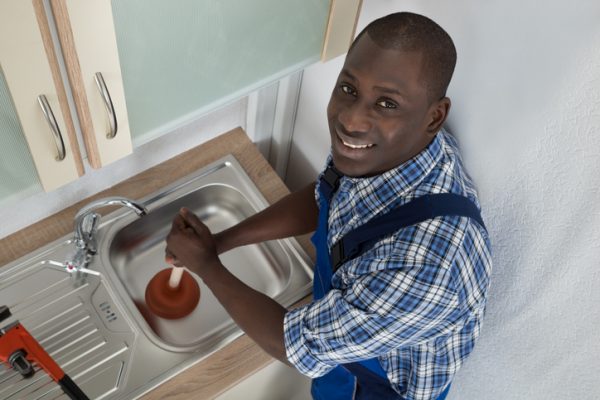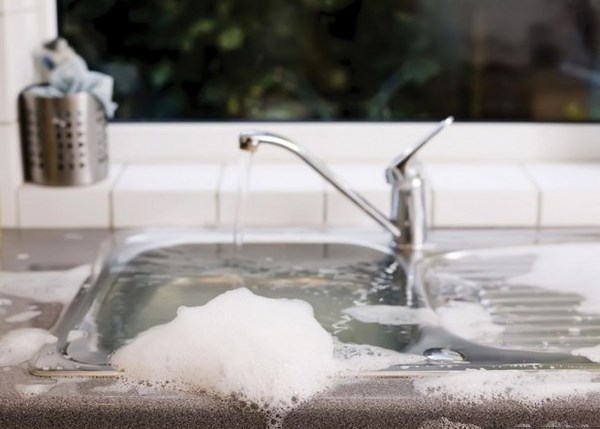The Big Blockage - 6 Causes Stalling Your Kitchen Sink's Ineffective Drainage
The Big Blockage - 6 Causes Stalling Your Kitchen Sink's Ineffective Drainage
Blog Article
We have uncovered this great article relating to What To Do When Your Kitchen Sink Won’t Drain directly below on the net and thought it made good sense to write about it with you here.

It's not regular for your cooking area sink to block numerous times in one month. If your sink obstructs two times a week, there's some problem taking place.
A blocked kitchen area drain doesn't just slow down your tasks, it degrades your entire plumbing system, bit by bit. Here are some common habits that encourage sink clogs, and also just how to prevent them.
You need appropriate waste disposal
Recycling waste is great, but do you pay attention to your natural waste also? Your cooking area ought to have two separate waste boxes; one for recyclable plastics and an additional for natural waste, which can end up being compost.
Having a designated trash can will certainly help you and your family members prevent throwing pasta and other food remnants down the drain. Generally, these remnants absorb moisture and also come to be blockages.
The fault isn't from your kitchen sink at all
Possibly the trouble isn't from your kitchen area sink, but the entire water drainage system. In such an instance, you might discover that other sinks and drains get obstructed every other week. You require an expert plumbing service to fix this.
You're tossing coffee away
Utilized coffee grounds and coffee beans still soak up a substantial amount of moisture. They might appear small enough to throw down the drainpipe, yet as time goes on they begin to swell and also use up more room.
Your coffee grounds need to go into natural garbage disposal. Whatever fraction gets away (possibly while you're depleting) will be cared for during your monthly clean-up.
You've been eating a great deal of greasy foods
Your cooking area sink may still obtain blocked despite natural waste disposal. This might be since you have a diet regimen rich in oily foods like cheeseburgers.
This grease layers the insides of pipelines, making them narrower and even more clog-prone.
Use a plunger
Your pipe had not been repaired effectively in the first place
If you have actually been doing none of the above, but still get normal clogs in your cooking area sink, you ought to call a plumber. There might be a trouble with just how your pipes were mounted.
While your plumber shows up, check for any kind of leaks or abnormalities around your kitchen area pipes. Do not attempt to deal with the pipes on your own. This may cause a mishap or a cooking area flood.
A person tried to clean their hair in the kitchen sink
There's a right time and also place for every little thing. The kitchen sink is simply not the appropriate area to wash your hair. Cleaning your hair in the cooking area sink will make it obstruct sooner or later unless you utilize a drain catcher.
While a drain catcher could capture most of the after effects, some hairs may still make it through. If you have thick hair, this might be enough to decrease your water drainage and ultimately create a clog.
There's more dust than your pipelines can deal with
If you get fruits straight from a ranch, you may observe even more kitchen dirt than other individuals that go shopping from a mall. You can easily fix this by cleansing the fruits and also veggies properly before bringing them right into your house.You require correct waste disposal
My Kitchen Sink Won’t Drain - What Should I Do?
If Your Sink Has a Garbage Disposal...
Turn on the disposal. If the disposal hums and doesn’t turn, then there’s clog in the disposal unit.
Go to your circuit breaker panel, and switch off the circuit breaker to your garbage disposal.
Back in your kitchen, double-check that your garbage disposal is off by trying to turn it on. The disposal should not move, and it should not make any noise.
Lie down underneath your sink so that you can see and access the bottom of the disposal unit. Look for a hole that looks like the head of a hex-head bolt in the center of the unit.
Place an Allen wrench inside this hole and turn it from side to side until you feel a decrease in resistance and are able to rotate the wrench completely in a single direction. This action rotates your disposal’s blade manually.
Put the wrench aside, and press the disposal unit’s reset button or switch.
Flip your garbage disposal’s circuit breaker switch back on, and turn on the unit to see if the obstruction has cleared. If it hasn’t, repeat the steps above until the obstruction is removed.
How to Unclog a Kitchen Sink Drain
If you have a double bowl sink, seal one side of the sink with an airtight lid or a second plunger before plunging the other side. Otherwise, you won’t be able to create adequate suction.
Place the cup of the plunger completely over the drain opening.
Turn on the faucet, and let the water run until it completely covers the cup of the plunger.
Start plunging by pushing the plunger down and pulling up again in order to build up suction. Make sure that the edges of the plunger stay in contact with your sink, or else you’ll lose the suction.
If you have trouble forming a seal between your sink and plunger, add petroleum jelly to the mouth of your plunger, and try again.
Plunge about five or six times before removing the plunger to see if water starts to drain properly. In some cases, you’ll even be able to feel the clog become dislodged while you plunge because suddenly there will be much less resistance. Repeat the plunging process until the clog clears.
Once water is draining properly again, run hot water down the drain for 5 minutes to help clear away grease, grime, and debris from the clog. https://www.plumbingjoint.com/blog/2019/august/my-kitchen-sink-won-t-drain-what-should-i-do-/

My Kitchen Sink Won’t Drain - What Should I Do?
If Your Sink Has a Garbage Disposal...
How to Unclog a Kitchen Sink Drain
https://www.plumbingjoint.com/blog/2019/august/my-kitchen-sink-won-t-drain-what-should-i-do-/
Do you really like reading up on Easy Ways to Unclog Any Drain in Your Home? Try leaving feedback down below. We'd be glad to see your thoughts about this content. We hope to see you back again before long. Do you know someone else who is fascinated with What To Do When Your Kitchen Sink Won’t Drain? Feel free to share it. Thank you for taking the time to read it.
Book Service
Report this page